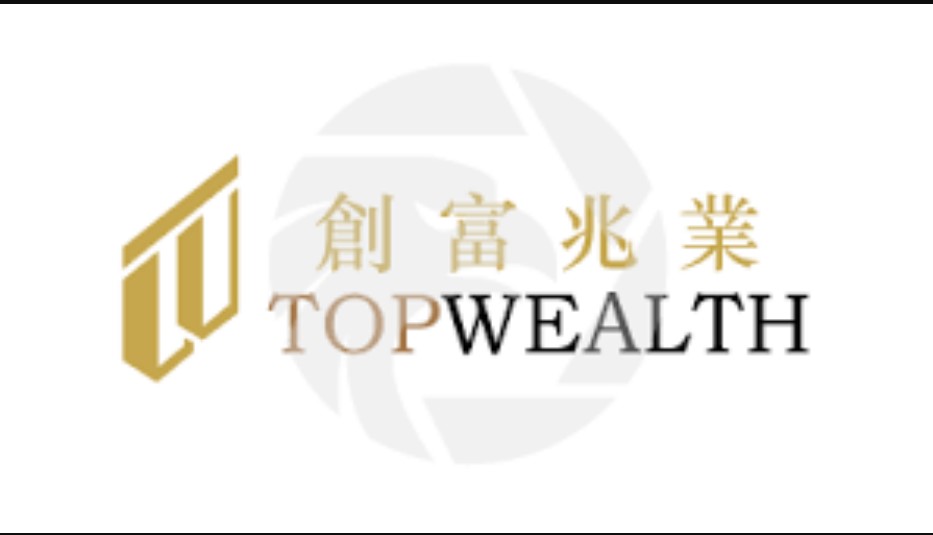Top-Welth.com Review —Shiny Name, Shakier Reality
There’s a formula many shady investment sites follow: an attractive name, professional-looking pages, bold promises of fast returns, and just enough technical gloss to make anyone feel they’re looking at a real product. Top-Welth.com (note the unusual spelling) fits that template in many ways — and that’s exactly why it deserves a careful, skeptical read before you even think about handing over money.
Below I walk through the claims, the warning signs, the psychology these sites exploit, and a practical red-flag checklist you can use when evaluating similar platforms. This is a long-form, blog-style take (≥1,300 words) written to help you spot problems quickly and think clearly.
First look: the façade of legitimacy
Open the site and your first impression is purposefully positive: a modern layout, jargon that promises “algorithmic advantage,” dashboards that look like trading software, and testimonials that read like triumph stories. The name itself — Top-Welth — is designed to sound like “Top Wealth,” which conveys authority, sophistication, and success.
That’s the problem with these pages: design and good copy are not the same thing as transparency or regulatory compliance. A pretty dashboard is easy and cheap to create; honest company practices, licensed operations, and verifiable leadership are not.
So the first principle: don’t let good UX be a substitute for verifiable facts.
Why the domain and name are suspicious
Small details matter. The hyphen and the spelling difference between “Top-Welth” and “TopWealth” are the sort of subtle distinctions fraudsters use to harvest trust from people who glance rather than scrutinize. Misspellings or variants of reputable names are commonly used to impersonate or confuse potential investors.
Another common red flag: sites that exist under many slightly different domains or that create a family of similar-looking addresses. That makes it easy for operators to close one domain and open another if complaints mount. When a name looks like a slightly “off” version of familiar brands, be especially cautious.
The promise: big returns, fast, with few details
The primary lure of Top-Welth.com is the same as many dubious platforms: implied or explicit promises of high returns, often paired with language about proprietary algorithms, risk-managed strategies, or “institutional tools made simple.” The messaging is carefully constructed to suggest both credibility and accessibility — it’s for the everyday investor, but powered by serious tech.
Reality check: in regulated markets, sustained high returns without commensurate risk are extraordinarily rare. Any platform suggesting near-guaranteed, rapid gains is making a claim that should be treated as suspect until independently proven.
What’s missing: transparency and verifiability
When you start looking for the things that actually matter—who runs the platform, where it’s legally registered, what licenses it holds, audited proofs of custody, and named executives—you often find gaps:
-
Leadership is anonymous or described in vague, corporate-sounding language rather than named personnel with verifiable histories.
-
No clear registration or license numbers are visible, and no regulator is cited with verifiable details.
-
Audits, custodial attestations, or third-party proof of funds and operations are absent or vaguely worded.
-
Contact channels exist but are limited or routed through web forms and generic email addresses rather than corporate phone lines or office addresses.
Those gaps matter because they remove accountability. If something goes wrong, who is responsible? Where does legal jurisdiction lie? Without clear answers, you’re operating blind.
Common user-experience patterns that should worry you
A consistent pattern shows up in complaints about platforms that look like Top-Welth.com:
-
Friendly onboarding, early “wins” — New users are greeted by smooth signup flows and sometimes see small, believable profits in their account dashboards. Those tiny wins are psychological hooks; they build trust and push users to invest more.
-
Pressure to upgrade — After investors deposit, they’re encouraged to upgrade to higher tiers for “better returns” or faster execution. Account managers or chat reps may emphasize limited availability and FOMO.
-
Withdrawal friction — When users request meaningful withdrawals, the hiccups begin: requests for extra “verification,” sudden “compliance fees,” or vague explanations about delays.
-
Evasive support — As the stakes grow, support becomes slower or more scripted; emails go unanswered, and live chat responses become inconsistent.
-
Domain hopping / rebranding — If complaints escalate, the platform may reappear under a new, similarly named domain.
If you see this sequence, treat it as a severe warning sign rather than an operational hiccup.
Technical signals that don’t guarantee safety — but do matter
Technical hygiene like an SSL certificate (the little padlock) or a professional hosting provider is good — but insufficient. Scammers use encrypted sites and modern servers too. The things that matter more are:
-
WHOIS / domain age and ownership: anonymous WHOIS records, very new domains, and repeated privacy masking are suspicious patterns.
-
Template sites and copy reuse: sites that use the same layout, copy blocks, or assets as dozens of other suspicious domains often indicate a churn-and-burn approach.
-
Low traffic and poor external validation: a legitimate platform typically has verifiable mentions, press, institutional partners, or transparent user reviews across multiple independent channels.
None of these is a smoking gun on its own, but together they build a risk profile.
The psychology the site exploits
Top-Welth.com and its peers are built to shortcut deliberation. They leverage three emotional levers:
-
Authority — Professional-looking pages and corporate language create a veneer of expertise.
-
Scarcity / urgency — Offers that sound limited or time-sensitive push people to act before they check the facts.
-
Social proof — Testimonials, fabricated user counts, and “success stories” give the illusion of widespread adoption.
Recognizing those levers helps you step back and ask the rational questions: show me the license, show me named leadership, show me independent proof.
Red-flag checklist for Top-Welth.com
Use this compact list when you evaluate Top-Welth.com or similar sites:
-
Domain name is a close variant of a known name (misspelling, hyphenation).
-
Ownership or registration details are masked or absent.
-
No verifiable regulatory license is published.
-
Leadership and team members are unnamed or unverifiable.
-
Promises of high or guaranteed returns with minimal risk.
-
Early “profits” on dashboards that precede withdrawal problems.
-
Pressure to deposit more or upgrade for better returns.
-
Withdrawal friction or vague “verification” demands.
-
Site design/template copied across multiple suspicious domains.
-
Little independent coverage or verifiable third-party audits.
If several of these apply, the platform should be treated as high risk.
How scammers layer tactics — the typical playbook
Understanding the arc helps: first, attract with design and promises; second, validate with small, believable wins; third, encourage larger deposits; fourth, block or delay withdrawals with procedural hurdles; fifth, fade or rebrand if pressure increases. Sites like Top-Welth.com are often optimized around that lifecycle.
That’s why the first small test—can you withdraw a modest amount quickly and cleanly?—is often the single most revealing signal of whether a platform is operationally sound.
Bottom line: where Top-Welth.com fits on the risk map
Top-Welth.com has many of the hallmarks of a platform that should be approached with skepticism. An attractive interface and persuasive copy are not substitutes for verifiable licenses, named leadership, independent audits, and a transparent history of satisfied users. The spelling and hyphenation in the domain name add another layer of doubt, because slightly modified brand names are frequently used to mislead.
Given the observed patterns and the way similar platforms operate, treating Top-Welth.com as high risk is the prudent stance. For most people, the sensible course is to avoid depositing money into a platform that can’t produce clear, independently verifiable proof of its legitimacy.
Quick summary checklist (one-line edition)
If you’re scanning fast: Top-Welth.com = catchy name + polished design + vague team + high-return claims + probable withdrawal risk = proceed with extreme caution / likely avoid.
Report Top-Welth.com Scam and Recover Your Funds
If you have lost money to Top-Welth.com Scam, it’s important to take action immediately. Report the scam to Jayen-consulting.com, a trusted platform that assists victims in recovering their stolen funds. The sooner you act, the better your chances of reclaiming your money and holding these fraudsters accountable.
Scam brokers like Top-Welth.com continue to target unsuspecting investors. Stay informed, avoid unregulated platforms, and report scams to protect yourself and others from financial fraud.
Stay smart. Stay safe.






